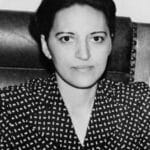Charlie Sifford defied decades of racial discrimination to become the first African American to compete on the PGA Tour, paving the way for future generations of Black golfers. More than just an athlete, Sifford was a civil rights icon whose courageous perseverance challenged the deeply entrenched racism within professional golf. His victories at the Greater Hartford Open (1967) and the Los Angeles Open (1969) symbolized not only his exceptional talent but also a triumph over prejudice. Honored with the Presidential Medal of Freedom in 2014, Sifford’s legacy continues to inspire athletes and activists alike to strive for equality and excellence.
From Caddy to Champion: Sifford’s Early Years
Born on June 2, 1922, in Charlotte, North Carolina, Sifford’s love for golf began at the age of 13 while caddying, a common entry point for aspiring golfers, especially during a time of segregation. He honed his skills amidst the racial tensions of the Jim Crow South, likely facing countless subtle and overt acts of discrimination. At 17, he moved to Philadelphia, a city with a more established Black golfing community, seeking greater opportunities to develop his talent. There, he further refined his skills, regularly playing at Cobbs Creek, a course known for nurturing Black golfing talent. He turned professional in 1948, joining the United Golf Association (UGA), the premier circuit for Black golfers at the time, often referred to as golf’s Negro Leagues. Sifford quickly rose to prominence, winning the National Negro Open six times, a testament to his exceptional skill and unwavering dedication. This early success within the UGA suggests that he possessed the talent to compete at the highest levels, even before he was allowed to join the PGA Tour.
Challenging the Color Line: The Fight for PGA Entry
Sifford’s ambition burned beyond the confines of the UGA. He yearned to compete against the best, a dream that meant challenging the PGA’s “Caucasians-only” clause, a stark reminder of the systemic racism prevalent in American society. This discriminatory clause directly prevented talented Black golfers like Sifford from competing on the PGA Tour, limiting their opportunities and hindering the growth of the sport. To support himself while pursuing his PGA dream, Sifford took on various jobs, including working as a valet for the renowned singer Billy Eckstine. This position probably exposed him to a different world of celebrity and influence, potentially providing valuable connections and support during his challenging journey.
The year 1960 marked a turning point. After years of battling discriminatory practices, Sifford, with crucial support from figures like Jackie Robinson and California Attorney General Stanley Mosk, finally earned his PGA Tour card. This breakthrough moment mirrored Jackie Robinson’s integration of Major League Baseball, signaling a shift in the landscape of professional sports. It was a victory not just for Sifford but for all Black athletes who had been denied opportunities due to their race.
Triumph and Tragedy on the Tour
Earning his PGA Tour card wasn’t a fairytale ending; it was the beginning of a new chapter filled with its own set of obstacles. Sifford faced relentless prejudice on the tour, enduring racism, isolation, and even death threats. This hostility likely took a significant psychological toll, requiring immense mental and emotional strength to overcome. Yet, amidst these trials, he achieved remarkable success, winning the Greater Hartford Open in 1967 and the Los Angeles Open in 1969. These victories were more than just tournament wins; they were resounding affirmations of his talent and resilience in the face of adversity. They demonstrated to the world that he belonged on the PGA Tour, shattering the prevailing narrative of racial inferiority in sports. In 1975, he further solidified his legacy by winning the PGA Seniors’ Championship.
Sifford’s personal life, while less documented in the public sphere, included his marriage to Rose and their two sons, Charles Jr. and Craig. He resided in Brecksville, Ohio, establishing roots outside of the constant scrutiny of the professional golfing world. His death on February 3, 2015, in Cleveland, Ohio, following a stroke, marked the end of an era, but his legacy continued to resonate powerfully.
A Legacy of Inspiration: Sifford’s Enduring Impact
Sifford’s perseverance extended beyond his own career. He paved the way for future generations of Black golfers, including Tiger Woods, who considered Sifford a mentor and father figure, referring to him as “the Grandpa I never had.” Woods’ public acknowledgement of Sifford’s influence speaks volumes about the profound impact he had on the younger golfer’s life. Delve into the captivating life of Charles Remond Douglass and uncover his remarkable contributions. Explore the fascinating story of Cecilia Bowes-Lyon, Countess of Strathmore and Kinghorne and her influential role in British history.
The significance of Sifford’s contributions is evident in the numerous accolades he received, culminating in the Presidential Medal of Freedom in 2014, awarded by President Barack Obama. This prestigious honor recognizes individuals who have made exceptional contributions to American society. It solidified Sifford’s place not just as a golfing legend but as a civil rights icon. This recognition underscores his broader impact on American society, transcending the world of sports and inspiring countless individuals in the ongoing fight for equality and justice. Lee Trevino’s comparison of Sifford to Jackie Robinson further highlights the magnitude of his achievement, placing him alongside other pivotal figures who challenged racial barriers in professional sports.
Why Tiger Named His Son Charlie
The story of Tiger Woods naming his son Charlie after Sifford further underscores Sifford’s legacy. This deeply personal tribute reflects the profound respect and admiration Woods held for the man he considered a mentor and a “grandpa.” The choice suggests a deep connection, forged not only through a shared love of golf but also through a shared understanding of the challenges and triumphs of overcoming adversity. The inclusion of the middle name, Axel, adds a layer of personal significance whose meaning remains largely private, inviting speculation and suggesting a deeper story yet to be fully understood.
The First Black Man on the PGA Tour: Answering the Question Directly
And finally, to answer the core question directly: Charlie Sifford was the first African American to break the color barrier and earn a PGA Tour card. This achievement, realized in 1960, was a watershed moment in golf history, a testament to his talent, resilience, and unwavering determination in the face of systemic racism. His story continues to inspire, reminding us of the power of perseverance and the importance of challenging injustice wherever it exists. The impact of his courage is still felt today, not only in the world of professional golf but in the broader context of the ongoing struggle for equality and social justice. While Renee Powell later broke barriers as the second Black professional on the LPGA Tour and the first Black woman to become a PGA of America member, Sifford’s legacy as the first Black man on the PGA Tour remains a cornerstone of golf history.
- Revolution Space: Disruptive Ion Propulsion Transforming Satellites - April 24, 2025
- Race Through Space: Fun Family Game for Kids - April 24, 2025
- Unlocking the Universe: reading about stars 6th grade Guide - April 24, 2025

















2 thoughts on “Charlie Sifford: Breaking Barriers and Building a Legacy on the PGA Tour”
Comments are closed.